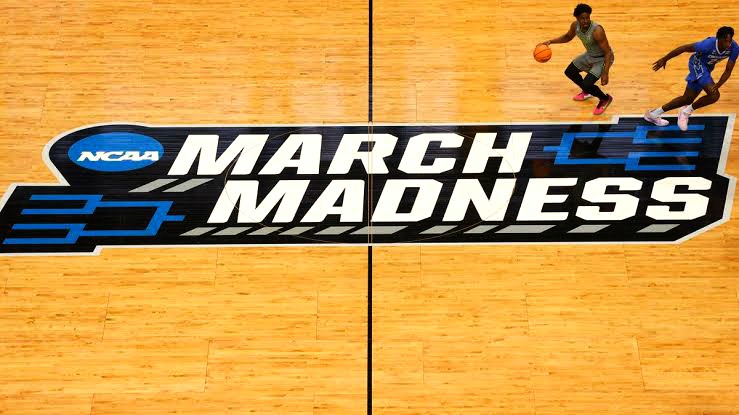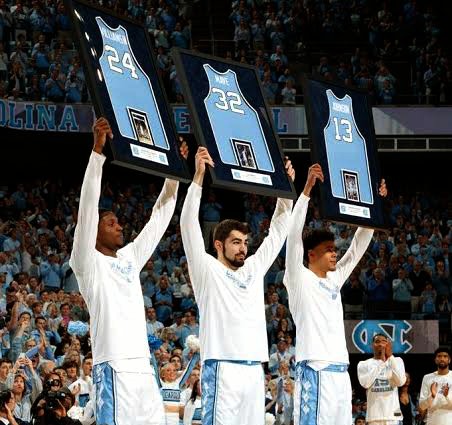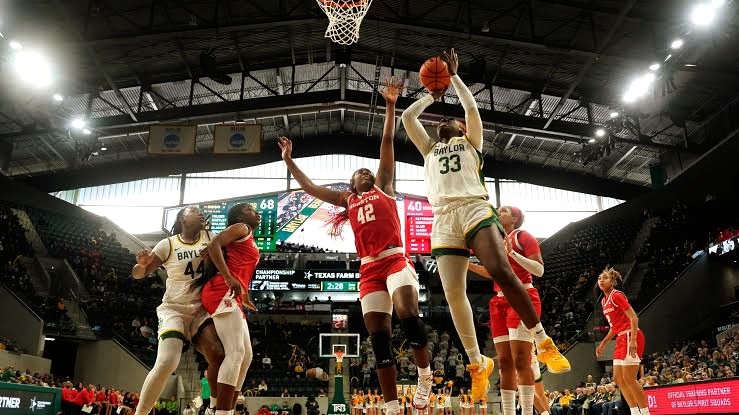
All About College Basketball

College basketball has long held a significant place in American sports culture. Unlike its professional counterpart, the NBA, college basketball offers a unique blend of raw talent, intense rivalry, and a sense of tradition. Every year, millions of fans tune in to watch their favorite teams compete, especially during the highly anticipated NCAA Tournament, known as March Madness. This article examines the rich history, the structure of the competitions, the impact on players’ careers, and the cultural significance of college basketball.
A Brief History

To begin with, the origins of college basketball date back to the late 19th century. Dr. James Naismith, who invented the game of basketball in 1891, saw his creation quickly adopted by colleges across the United States. In 1939, the first NCAA tournament took place, setting the stage for what would become one of the most beloved sporting events in the country. Over the decades, college basketball has evolved significantly, introducing new rules, expanding the number of teams, and enhancing the level of competition.
Structure of College Basketball

Furthermore, the structure of college basketball is both intricate and fascinating. The NCAA divides itself into three divisions, with Division I being the most prominent and competitive. Division I itself splits into various conferences, such as the ACC, Big Ten, and SEC, each hosting its own set of teams. During the regular season, teams compete within their conferences, aiming for a spot in the NCAA Tournament. The tournament follows a knockout format, creating a thrilling and unpredictable atmosphere as teams vie for the national championship.
March Madness: The Pinnacle of Excitement

Moreover, the NCAA Tournament, commonly known as March Madness, highlights the college basketball season. Starting with 68 teams, the tournament captivates fans with its single-elimination format. One loss results in a team’s elimination, leading to a high-stakes environment where upsets and Cinderella stories happen frequently. The excitement culminates in the Final Four, where the last four teams compete for the championship. March Madness is not just a sports event; it is a cultural phenomenon that engages millions of people in bracket challenges and watch parties.
Impact on Players’ Careers

In addition, college basketball serves as a critical stage for aspiring professional players. For many, it acts as a stepping stone to the NBA. College programs offer young athletes the opportunity to develop their skills, gain national exposure, and compete against top-tier talent. Notable NBA stars like Michael Jordan, Larry Bird, and Magic Johnson all honed their skills in college before transitioning to successful professional careers. However, not all players make it to the NBA, and college basketball provides them with valuable education and life skills that benefit them beyond the court.
Cultural Significance

Additionally, college basketball holds immense cultural significance. It fosters a sense of community and school pride, uniting students, alumni, and fans. College basketball’s rivalries, such as Duke vs. North Carolina or Kentucky vs. Louisville, deeply ingrain themselves in the culture and often become the highlight of the sports calendar. The sport also promotes values such as teamwork, perseverance, and dedication, serving as an inspiration for young athletes and fans alike.
Challenges and Controversies

Nevertheless, college basketball faces its share of challenges and controversies. Issues such as the debate over whether college athletes should receive payment, the impact of the “one-and-done” rule, and concerns about academic integrity frequently arise. Critics often target the NCAA for its handling of these issues, and ongoing discussions aim to address and improve the system for the benefit of the athletes and the sport as a whole.
College Basketball Rankings

College basketball rankings are a critical aspect of the sport, providing insight into the performance and potential of various teams throughout the season. Firstly, these rankings offer a snapshot of how people perceive teams based on their recent performances, wins, and losses. Consequently, they shape expectations and narratives around the teams. For instance, a higher-ranked team may face theoretically weaker opponents in the early rounds, giving them a clearer path to the championship.
Moreover, college basketball rankings often determine seeding in tournaments, heavily influencing a team’s path to success. Conversely, lower-ranked teams might need to upset stronger opponents to advance, making their journey more challenging. In addition, rankings can impact both the players and fans psychologically. For players, being part of a top-ranked team can boost morale and confidence, while for fans, it fosters pride and loyalty.
However, rankings are not always definitive indicators of success. Upsets are common in college basketball, showing that lower-ranked teams can sometimes outperform their higher-ranked counterparts. Furthermore, the criteria for rankings vary, often incorporating factors such as strength of schedule, margin of victory, and individual player performance. These elements combine to provide a comprehensive assessment of a team’s capabilities.
Despite this, rankings still generate debate and interpretation, leading to discussions and sometimes controversies among analysts and enthusiasts. Ultimately, while college basketball rankings serve as a valuable tool for evaluating teams, they are just one piece of the puzzle. The dynamic and unpredictable nature of the sport ensures that rankings, while informative, cannot fully capture the excitement and uncertainty that make college basketball so captivating.
College Basketball Schedule

College basketball captivates millions of fans nationwide, but scheduling games requires careful planning and coordination. The foundation of any college basketball schedule includes conference games. Each team belongs to a specific conference, with predetermined schedules they must follow. For example, the Atlantic Coast Conference (ACC) sets a specific number of games against other conference teams. Moreover, these games are spread throughout the season to ensure fair competition and maintain fan interest.
Non-conference games also shape the college basketball schedule. These high-profile matchups boost a team’s visibility and ranking, enhancing their strength of schedule for NCAA tournament selections. Additionally, non-conference games offer teams the chance to face different playing styles and improve performance. Holiday tournaments like the Maui Invitational and Battle 4 Atlantis bring together top teams for highly competitive games, further enriching the schedule.
Travel is a crucial factor in the scheduling process. Teams face demanding travel schedules, so officials minimize travel fatigue by strategically planning road trips and balancing home and away games. Additionally, television contracts with major networks like ESPN, CBS, and Fox Sports heavily influence game times and locations, with prime-time slots and weekend games attracting the largest viewership.
In summary, creating a college basketball schedule involves balancing conference obligations, non-conference opportunities, travel logistics, and television considerations. Ultimately, the goal is to provide a competitive and engaging season for both players and fans. With this in mind, understanding the transition words and the flow of this process helps us appreciate the careful planning that goes into every college basketball season.
College Basketball Games Today

In today’s college basketball scene, transition basketball is dynamically evolving, blending strategic innovation, athletic prowess, and technological advancements. Teams continually seek ways to exploit fast-break opportunities, leveraging analytics and advanced statistics to inform their approach. This data-driven mindset, coupled with the rise of social media and digital platforms, fosters a collaborative environment where players and coaches can adapt and innovate in real-time.
On the court, modern basketball emphasizes positional versatility and basketball IQ, with players expected to excel in multiple roles and contribute across all facets of the game. Skill refinement and fundamental mastery are paramount, as teams heavily invest in training and conditioning programs to enhance players’ speed, agility, and decision-making abilities. However, the challenges posed by zone defenses and strategic pace control by opponents necessitate a flexible approach, with teams balancing transition play with half-court execution and set plays.
Despite these challenges, basketball remains a thrilling, high-energy style of play that defines the essence of college basketball. As teams navigate the complexities of roster management and talent recruitment, the future of basketball shines brightly on the horizon. It is a dynamic fusion of athleticism, strategy, and technology, driving the history of college basketball games in exciting new directions.
Basketball today represents the pinnacle of innovation and adaptation in college athletics, shaping the future of the game. With its blend of speed, agility, and strategic acumen, transition play continues to captivate audiences and define the essence of collegiate hoops. As teams embrace the challenges and opportunities of the modern era, the allure of transition basketball remains undiminished, promising a thrilling journey for fans and players alike.
College Basketball Scores

In the fast-paced world of college basketball, transition scores pulse with athleticism, teamwork, and strategy, defining the game’s tempo and outcomes.
Transition basketball relies on defensive prowess and offensive agility. Teams disrupt opponents’ flow, forcing turnovers and contested shots to ignite fast breaks. Solid defensive rebounding ensures quick possession turnovers, creating opportunities for rapid offensive transitions.
Offensively, transition scores demand split-second decision-making and precise execution. Ball handlers read defenses, identifying openings and passing lanes, while teammates sprint down the court to create scoring options. Coaches play a pivotal role, instilling defensive pressure and designing offensive sets to maximize transition opportunities.
Each transition score symbolizes teamwork and execution, showcasing the collective effort of the entire team. From thunderous dunks to acrobatic layups, these moments reflect the relentless pursuit of excellence and the exhilarating thrill of competition that defines college basketball at its best. So, as fans marvel at the spectacle of transition basketball, they witness more than just points on the board; they experience the heart and soul of the sport in action.
Women’s College Basketball

Women’s college basketball has evolved from a marginalized sport to one garnering substantial attention and respect. Initially, teams faced limited resources, but the enactment of Title IX in 1972 mandated equal opportunities, leading to increased funding and support. This pivotal moment set the stage for the sport’s future growth.
In the 1980s and 1990s, women’s college basketball surged in popularity, with teams like the University of Tennessee and the University of Connecticut becoming powerhouses under legendary coaches Pat Summitt and Geno Auriemma. Their leadership not only secured multiple national championships but also promoted an exciting brand of basketball. Additionally, increased media coverage broadened the audience, showcasing the high level of skill and competition in the sport.
Women’s college basketball has seen a rise in skill level alongside increased visibility. Icons like Cheryl Miller, Lisa Leslie, and Diana Taurasi inspire young girls, driving grassroots growth. Additionally, the sport serves as a platform for advocating social justice, with players and coaches addressing issues like gender equality, racial justice, and LGBTQ+ rights.
The financial aspect of women’s college basketball has changed significantly, with the NCAA Women’s Basketball Tournament (March Madness) growing in popularity and profitability. Networks compete for broadcasting rights, and lucrative sponsorship deals have emerged, supporting athletic programs and providing scholarships for female athletes. Overall, women’s college basketball has become a prominent and influential sport, promoting gender equality and social change. Its continued growth will inspire future generations and foster inclusivity.
Women’s College Basketball Scores

As women’s college basketball season progresses, fans eagerly seek updates on the latest scores and developments. Whether you’re a devoted supporter or a casual observer, staying informed about scores can deepen your understanding and enjoyment of the game. This article explores the importance of staying updated on women’s college basketball scores and provides a comprehensive overview of transition words to help you navigate through game summaries effortlessly.
Why Keep Track of Women’s College Basketball Scores?
Tracking women’s college basketball scores offers numerous benefits:
- Stay Engaged: Following scores keeps you actively involved with the sport, enabling you to remain connected to your favorite teams and players throughout the season.
- Gain Strategic Insights: Understanding scores provides insights into team performance, player strengths, and areas needing improvement, enhancing your strategic analysis of the game.
- Foster Community Involvement: Sharing score updates fosters a sense of community among fans, creating opportunities for discussion, camaraderie, and friendly competition.
- Build Anticipation: Tracking scores builds anticipation for upcoming matchups, adding excitement and suspense to the season.
Staying updated on women’s college basketball scores deepens fan engagement, provides strategic insights, fosters community, and builds anticipation for matchups. Using transition words helps you navigate game summaries smoothly, enriching your experience whether you’re a seasoned fan or new to the sport.
Conclusion

In conclusion, college basketball remains a dynamic and integral part of American sports. Its rich history, exciting competitions, and significant impact on players and fans alike contribute to its enduring popularity. As the sport continues to evolve, it will undoubtedly encounter new challenges and opportunities. Nonetheless, the passion and excitement that college basketball generates ensure that it will remain a beloved tradition for generations to come.
Click for more on College Basketball
Related Topics
Davido Sparks MSG Magic as Knicks Outshine Nets in NBA Showdown
Game Changers: The Evolving Landscape of College Sports Finance
D’Tigress Takes Center Stage: Set to Battle Basketball Titans in Paris 2024 Olympics



Really a good sportsmanship
Helps student to develop their career and be physically fit.